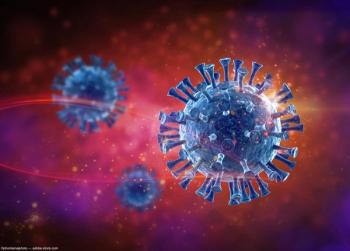
COVID-19 vaccination inequities in Massachusetts
Massachusetts researchers are reporting structural disparities in vaccine distribution in the state.
Massachusetts researchers reported structural disparities in vaccine distribution in the state, specifically, “lower vaccine coverage to infection risk in communities with increased socioeconomic vulnerability and larger proportions of Black and Latinx individuals,”1 according to Scott Dryden-Peterson, MD, MSc, from the Division of Infectious Diseases, Department of Medicine, Brigham and Women’s Hospital; Department of Immunology and Infectious Diseases, Harvard T.H. Chan School of Public Health; and Botswana-Harvard AIDS Institute, Boston.
In this study, Dryden-Peterson explained that he and his team looked at the alignment of vaccination and SARS-CoV-2 risk in Massachusetts by creating and applying a vaccination-to-infection risk (VIR) ratio.
They analyzed data from the Massachusetts Department of Public Health and Boston Public Health Commission from January 29, 2020, through June 24, 2021, from 278 cities and towns and 15 Boston neighborhoods representing 6,755,622 residents (98.6%).
The VIR ratio and Lorenz curves were used to assess the vaccination equity.
The former was the quotient of the number of fully vaccinated individuals divided by the cumulative number of confirmed SARS-CoV-2 infections in each community; VIR ratios that were lower the statewide mean indicated lower vaccination coverage relative to their infection risk.
The latter, which assesses equity in resource distribution, described vaccination relative to the COVID-19 burden and calculates summaries of inequity and magnitude of vaccine reallocation required to achieve equity, Dryden-Peterson explained.
Data from the Massachusetts Department of Public Health and the American Community Survey were used to determine community age, race, and ethnic makeup. Socioeconomic vulnerability was estimated using the Socioeconomic Status domain of the Social Vulnerability Index.
Dryden-Peterson’s team reported that by June 24, 2021, 649,379 (8.9%) SARS-CoV-2 infections were confirmed in 6,755,622 residents, and 3,880,706 (57.4%) had received 2 vaccinations.
Main study findings
“Cumulative incidence of confirmed SARS-CoV-2 infection (minimum, 1.6%; maximum, 24.1%) and complete vaccination (minimum, 26.5%; maximum, 99.6%) varied considerably [among] communities.
Communities with increased socioeconomic vulnerability had lower VIR ratios indicating less equitable vaccination relative to infection risk,” the investigators reported.
Multivariable analysis showed that decreased vaccination relative to infection risk was independently associated with increasing socioeconomic vulnerability and when more than 20% of the community was Black and/or Latinx (p < 0 .001 for both comparisons).
Improved community vaccine coverage was found both when communities had a higher proportion of residents 65 years and when fewer than 7500 residents lived in the communities (p = 0.007 and p < 0 .001, respectively).
Dryden-Peterson also reported that Lorenz curves indicated considerable inequity, with an estimated Gini coefficient (1, complete equity; 0, complete inequity) of 0.51 between communities and 0.47 by race and ethnicity.
An estimated 810,000 full vaccination courses would need to be diverted to undervaccinated communities to achieve equity.
The investigators suggested that the state relied on large hospital systems and mass vaccination sites to distribute the vaccinations, which may have not been focused on mitigating structural racism.
The study concluded that disparities in vaccine coverage highlight ongoing inequities in the approach to COVID-19 and imperil efforts to control the pandemic.
---
Reference
1. Dryden-Peterson S, Velásquez G-E, Stopka TJ, et al. Disparities in SARS-CoV-2 Vaccination-to-Infection Risk During the COVID-19 Pandemic in Massachusetts. JAMA Health Forum 2021;2(9):e212666. doi:10.1001/jamahealthforum.2021.2666
Newsletter
Don’t miss out—get Ophthalmology Times updates on the latest clinical advancements and expert interviews, straight to your inbox.









































